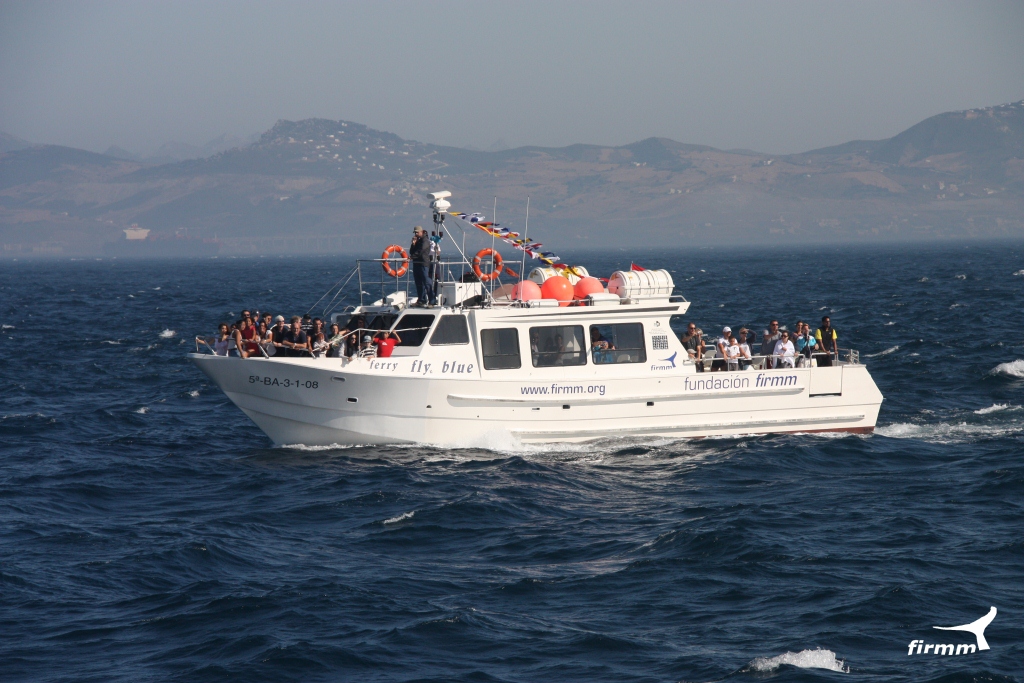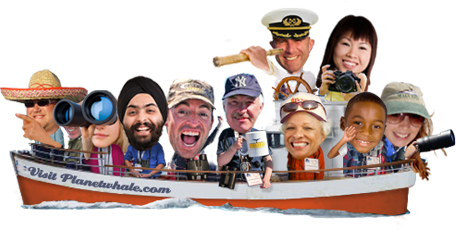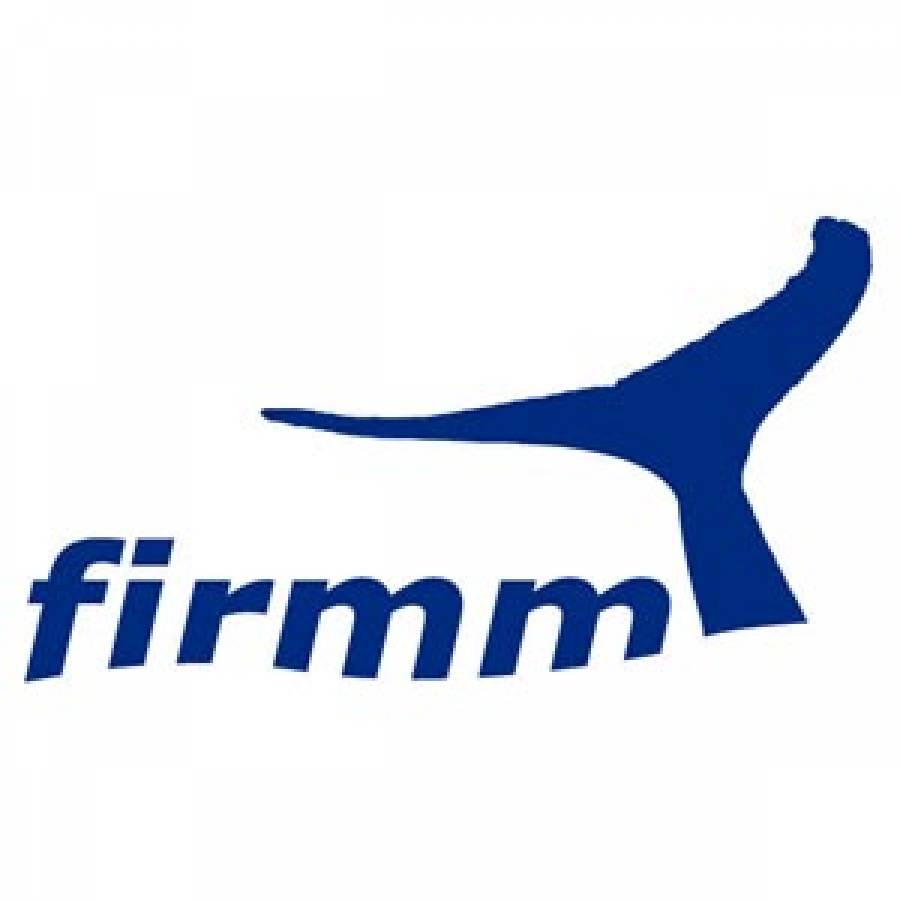
Features of an ideal whale watching boat
Joern Selling, FIRMM (Foundation for Information and Research on Marine Mammals), Spain
Introduction
The type of boat drives the way whale watching is carried out more than one might believe. Its stability may influence the possible courses that can be taken according to the direction of the waves, which may not match the best course for approaching the animals in that particular situation. The position of any observer and his/her communication with the captain, are also crucial to guarantee a respectful approach. The height of exhaust pipes can be a problem for whales positioned downwind; unprotected propellers can harm them as well. The shape of the passenger deck can also drive the way boats are being positioned in relation to whales, by their captains - in order to assure a good sighting for everybody on board.
This case study, which is based on the four boats used by FIRMM since 1998 highlights how little the influence of boat type is considered. Even where regulations exist, the characteristics of a particular boat can obligate (or even seduce) captains to use a more disturbing approach. The key characteristics, detected after 10 years working on different boats, with different captains, will be listed and suggestions for possible improvement described.
 Hull shape
Hull shape
The ship can be a mono-hull, a catamaran or a trimaran but stability will be better if the bridge is as low as possible and the passengers stay on a low main deck, rather than a higher one, a second floor, or a roof. A low passenger deck also allows for better observation of the animals when they approach voluntarily. The most stable hull shape is usually a flat one, which can also provide more speed if desired, due to its ability to plane on top of the water. The lighter the boat, the smaller the engine needed to plane. Though speeding can lead to the killing of surface dwelling animals like sunfish and turtles, (see protected propellers). Our second boat needed a lot of speed to navigate properly and with unprotected propellers it unfortunately killed a few sunfish. It was also sometimes too fast to detect diving cetaceans, which would emerge far away at the stern after we had sped over them.
Exhaust pipe position
Cetaceans have little, or no, sense of smell. Most smaller boats have their exhaust pipes positioned at water level, usually at the stern. This is not only bad for the whales, who can breathe in carbon-monoxide if positioned downwind of the stern, but also for passengers, especially during low speed navigation, when wind from behind can blow the exhaust fumes into the passenger deck. Increased susceptibility to seasickness may be the result. Rebuilding of the exhaust system to direct the gas to the roof should not be too big a task and is especially recommended for those boats with older engines, which can produce more black smoke. If rebuilding is not possible, trying to stay downwind of whales should be seriously considered.
Glass bottoms
Glass bottom boats are promoted as the ‘ultra’ experience by tour operators possessing these vessels and this is understandable where the trip is to view coral reefs for example. However if used for whale watching, the glass bottom may encourage captains to drive their boats over the animals. Thus their use for responsible whale watch operations is not recommended.
Protected propellers
These are designed to ensure objects or animals being hit will slide along the protecting structure. Some solutions however, possess a flat face pointed towards the sailing direction, which may actually cause more damage by stopping animals or objects.
Protected propellers are known to cause vibrations. The water propelled against the protecting structure by the centrifugal forces generated by the rotating blades can often be the cause of this. However, these vibrations lead boat owners and shipyards to claim effective protection of propellers is an impossibility. Talking with an engineer of the shipyard that constructed the two boats we are currently using, we came to the conclusion that it is not necessary to surround the propeller. It would be sufficient to protect the volume in front of the propeller by a structure which allows objects and animals to glide around it and which leaves a gap to the rotating blades, without surrounding them. The propeller can rotate freely and as long as the boat goes only forward (in Spain, reversing is prohibited in the presence of cetaceans), there will be no danger of anything either getting sucked into it, or getting cut.
A hydrodynamic design can minimise the loss of speed. Ideally, it would be best to do this at the shipyard when a new boat is built. Otherwise, the hull may need reinforcement and the already installed engines may impede the access to attach screws and nuts. But where there is a will, there is a way!
Electric powered ships, hybrids
There is a lot of talk concerning the reduction of carbon emissions. Much can be done by changing the way we do things, like filling one boat instead of going out with two that are half empty. This is especially effective if coordinated between different tour operators, but requires a good relationship - something frequently difficult to achieve if competition between companies is tough and styles of working are very different.
Another, much more effective method may be the use of electric engines. For whale watching, a hybrid is probably the best solution. To get to the whales a fuel powered engine can do the job and charge batteries, while once the site is reached, the quiet and fume-free electric engines help ensure a pleasant experience. In the Strait of Gibraltar it is prohibited to stop engines because of heavy ship traffic, in other areas engines may be able to be stopped, reducing fumes and noise.
Position of captain and observer
The bridge should allow the captain to watch above the heads of passengers at the bow. On our third ship, the captain has free sight to the bow and the sides. The observer position on the roof allows for 360 degree sight. This is very important as it allows a view of the unprotected propellers (which the captain can’t see). The communication between captain and observer is direct, which we find is much better than any technical system. On boats where the captain doubles as an observer, he/she should have a fly bridge that provides a 360 degree visual, at least for the time spent beside whales.
This is not possible on our fourth boat, so the captain is dependent on the information received from the observer on the roof. Having had troubles with the communication system between the observer (me) and the captain this season, we have started to use hand held radios. If used occasionally these may be practical (for example to inform the captain that cetaceans have left the area near the propellers before engaging them again). But when used continuously, we find problems of interference, low battery power, or wind in the microphone arise.
Also, it seemed to have been the hobby of the competition this season to scan our channel in order to know what we were doing; something that might be desirable in certain circumstances but not helpful if you want your customers to have a peaceful experience with the whales. To address the communication issue we will be rebuilding the bridge of our fourth boat to copy the shape of the one on our third. The fourth boat is very stable however and possesses a magnificent open passenger deck. Both boats have a toilet and a closed area providing shelter, with large windows that can be opened. Unfortunately though, the propellers are unprotected and the exhaust pipes are at water level on both.
Conclusion
The ideal boat makes a big difference. It is safer for cetaceans, the work for the crew is easier, it gives a much better experience for passengers and can help an operator comply with voluntary and legal regulations. However...the perfect ship for whale watching has probably still to be built!
For more information on the Responsible Whale Watch Partnership click here - we're very happy to be welcoming many of the 2012 partners on board in 2013 as Ambassadors for the international alliance. Get in touch at info@planetwhale.com if your company would like more information about joining the partnership, or if you'd like to recieve a copy of the 2012 Report on Responsible Whale and Dolphin Watching.
The first case study to be released, "Whale Watch Education: A curriculum to foster environmental responsibility. Cynde McInnis, Cape Ann Whale Watch, USA", can be read here. Follow us on Facebook and Twitter for more information!
2012 Report on Responsible Whale and Dolphin Watching: The Commercial Advantages of a Sustainable Approach

The 2012 Report on Responsible Whale and Dolphin Watching was produced collaboratively by 2012 partners in the Responsible Whale Watch Partnership. As a sneak preview, this is one of the eleven case studies contributed by operators from around the world. Entitled Features of an Ideal Whale Watching Boat, it is included in the chapter of the report which focuses on the operators' own research or conservation work. A big thank you to Joern Selling from FIRMM (Spain), one of the Responsible Whale Watch partners for contributing the case study. Keep an eye on this page for more previews to come!
This report has been produced by Planet Whale with funding from Defra (The Department for Environment, Food and Rural Affairs in the UK). It is intended to raise awareness of the various sustainability initiatives implemented by whale and dolphin watch operators worldwide and highlight the positive impact these have had on their businesses and the marine environment. It is hoped that showcasing their collective success will inspire other operators to follow suit, and crucially, will demonstrate the ability, passion and commitment of those leading the way in the industry, to develop their own practical and workable solutions to both local and global issues of sustainability and environmental responsibility.
The report is divided into five categories of indepth case study, addressing five issues the whale watch industry and Planet Whale are focusing attention on in a global strategy to improve whale and dolphin watching standards worldwide. These five issues are:
1. How well a trip publicises and uses guidelines for safe approach to wild whales / dolphins.
2. The value of a trip is as a learning experience.
3. How well a trip meets customers' expectations.
4. How effectively a trip minimises its impact on the marine environment.
5. An operator's emphasis on own research or support for conservation.
Contributors to the 2012 Report include: Arctic Whale Tours, Norway; Cape Ann Whale Watch, USA; Conscious Breath Adventures, Dominican Republic; Dolphin Encountours, Mozambique; Elding, Iceland; FIRMM, Spain; Hebridean Whale Cruises, UK; Marine Discovery Penzance, UK; Turmares Tarifa, Spain; Whale Watching Panama, Panama; and Whale Watch West Cork, Ireland.
The report is available for download here.



